Interior design for well-being
Home Office: Working from Home – Living at Work Balance. Part I
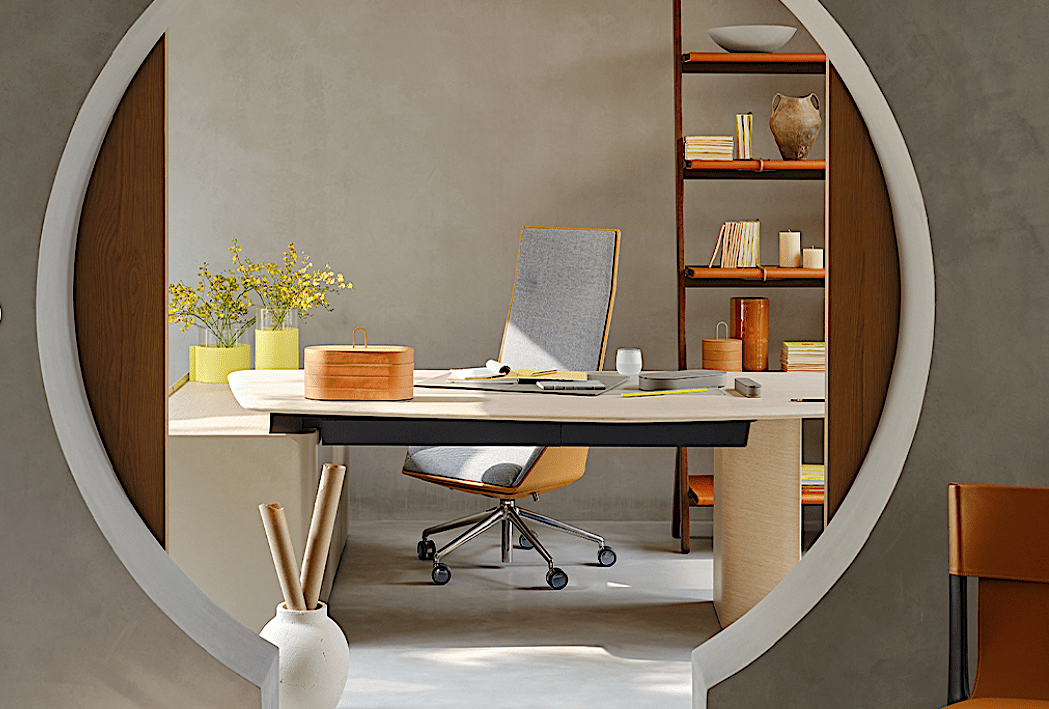
The achievements of digital technologies have led to many professionals having the flexibility to work from anywhere. This evolutionary process has been accelerated by the Covid 19 pandemic entailing physical social isolation. The old way of working in not seldom overcrowded and distracting, open-plan offices and individual yet impersonal C-level facilities, where employees used to spend at least eight hours a day, is objectively passé. Unprecedented freedom of working from home, bed, beach and café has become a “legal” reality. According to surveys carried out after two years of remote working due to the pandemic, more than half of “the workers with jobs that can be done from home say they’d like to work from home all or most of the time when the pandemic is over if given the choice” (CNN, https://edition.cnn.com/2022/02/16/success/pew-survey-covid-affect-on-work-from-home/index.html). In fact, there is not much to regret because many corporate workplaces were/are not exactly healthy for people and sustainable for the environment. We are learning to set new patterns and embrace new organisational structures of working.
As new types of workplaces emerge, we can see a convergence of home study to the business office and vice versa – the business office takes on many domestic facets. Nowadays, there are strongly sober business-style home offices and cheerfully designed business facilities, which rather have the ambience of a playroom. So, it seems like anything goes in office design.
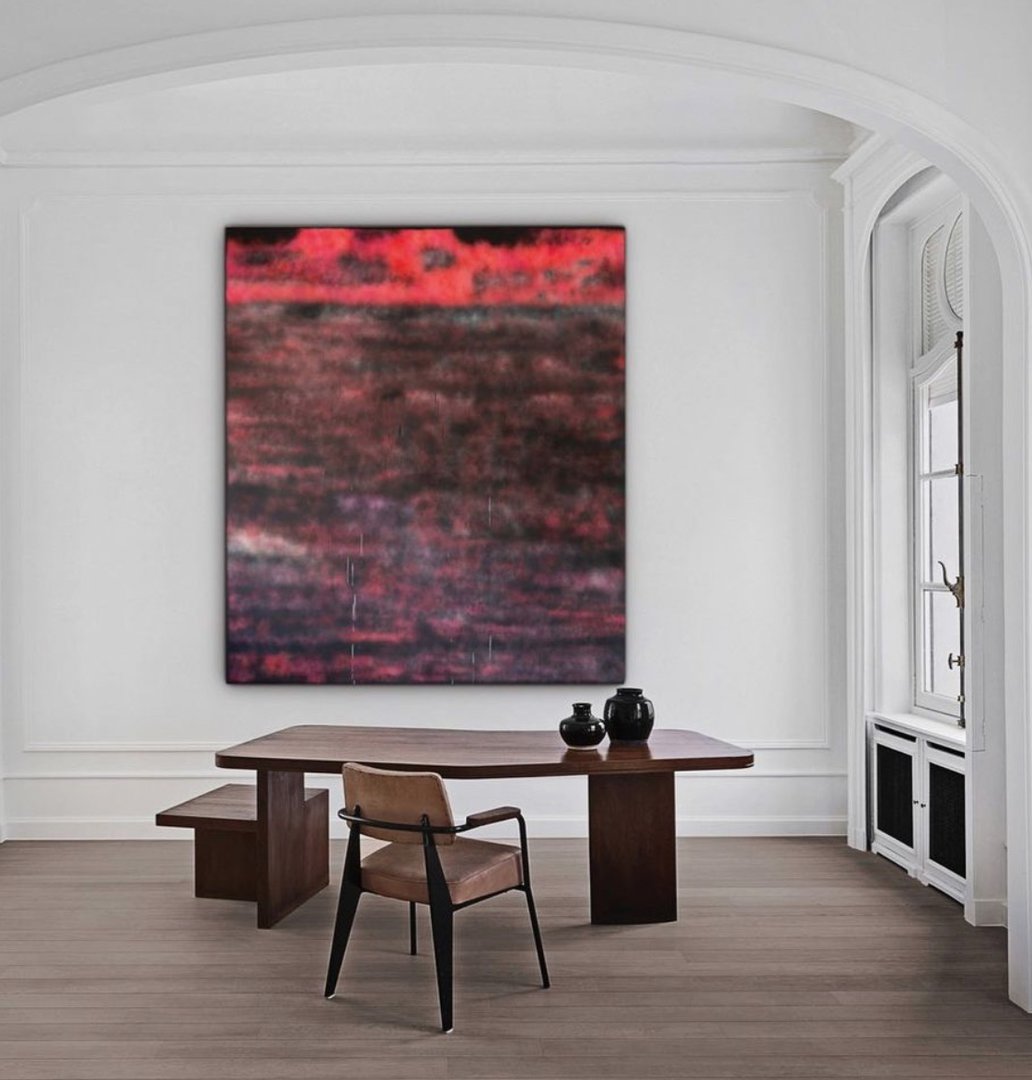
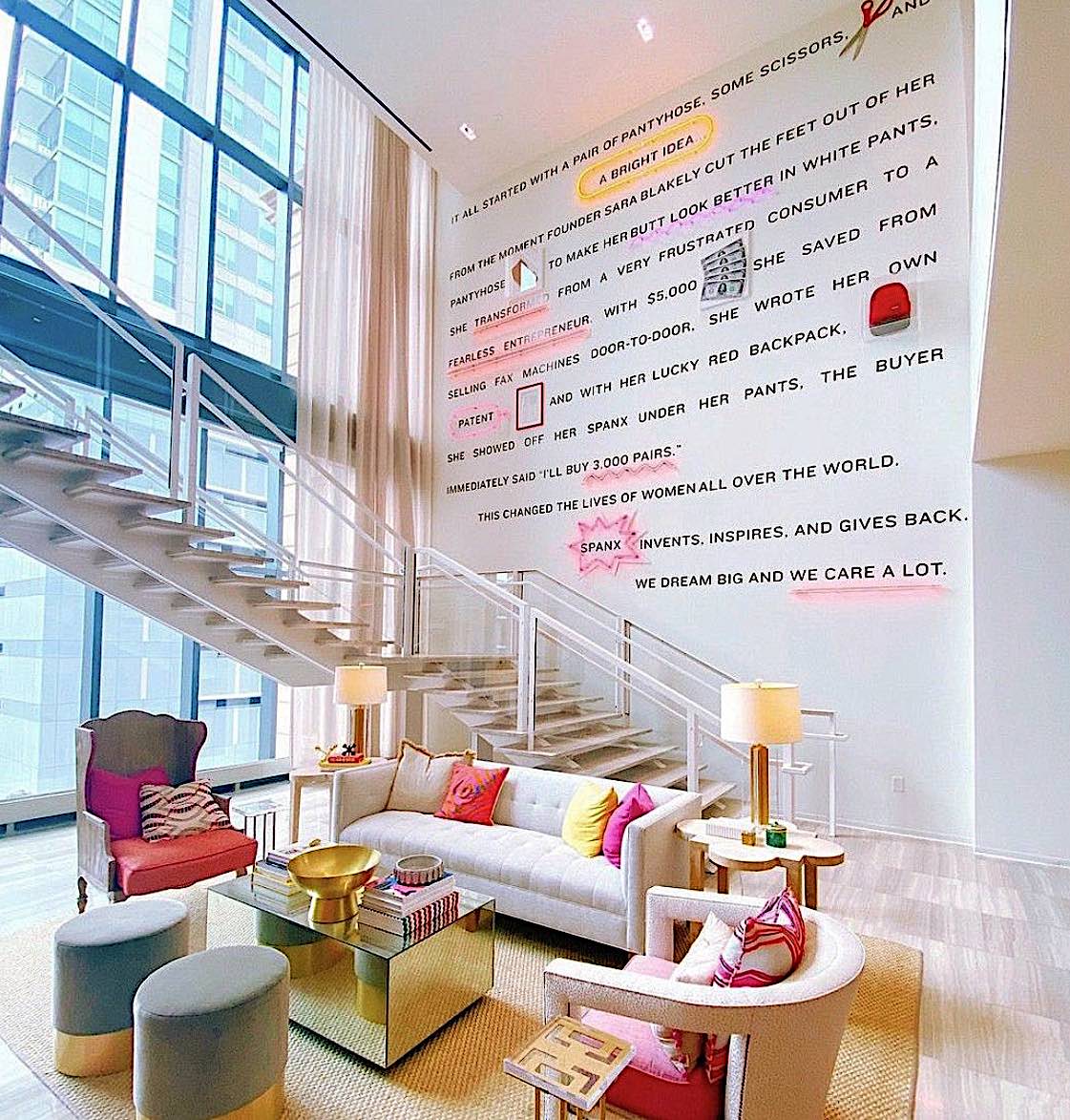
A minimalistic home office in a 19th-century Brussels house. Photo credit: @elledecoritalia (1st picture). The inspiring headquarters of Spanx as posted by the company’s founder Sara Blakely on LinkedIn. Her successful business story can be read on the wall (2nd picture).
Defining Our Workplace at Home
The trending shift from a corporate to a home office is an opportunity to design our work environment in a way that indeed serves us to the max. We can achieve this when our workplace furnishings reflect both the specifics of our job and our own personality. This means we can add a great deal of personal character to the functionality we need to work with. Thus, the entire perspective of our residential workplace will promote not only vocational but also private goals.
Whether living alone, in a partnership, or as a part of a large family, it is beneficial for both our effective work performance and restful home living to define our work territory and create privacy within it. Of course, it is advantageous to have a room dedicated as a home office; one can then simply close the door and thereby signal, “I’m working and would appreciate not being distracted”. However, not having a separate room shouldn’t be a big burden. In any home can be found various design possibilities to create a pleasant and comfortable working-from-home nook. Through thoughtful interior (re-)designing, we can adapt our house for conflict-free living and working zones all under one roof.
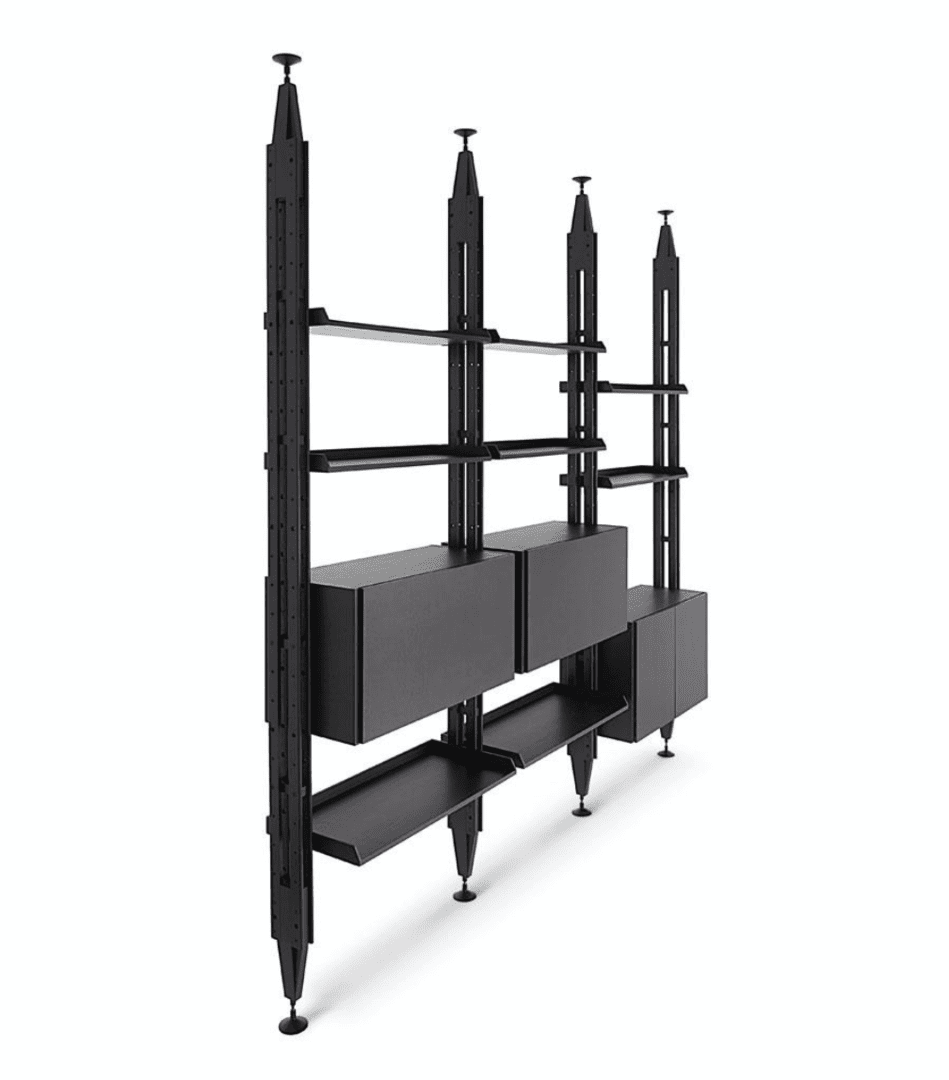
If your workplace is in a commonly shared space, putting some physical and otherwise clear boundaries will protect it, keeping the differentiation between the working and living spheres. For example, the orientation of the layout with “the back” to the common area is an effective signal for zone separation. Some pieces of furniture, such as a sofa or book/storage units, can be used as a physical barrier between your workplace and the shared one. (It goes without saying that if we use a free-standing bookcase or a shelving unit, they should be safely fixed on the floor and the ceiling). Combined as a group with a suitable piece of furniture that faces the common area will make this visual border pleasant from both sides.
835 Infinito by Franco Albini for Cassina. An elegant double-sided bookcase that can perfectly serve as a dividing wall. It offers infinite possibilities for individual configurations.
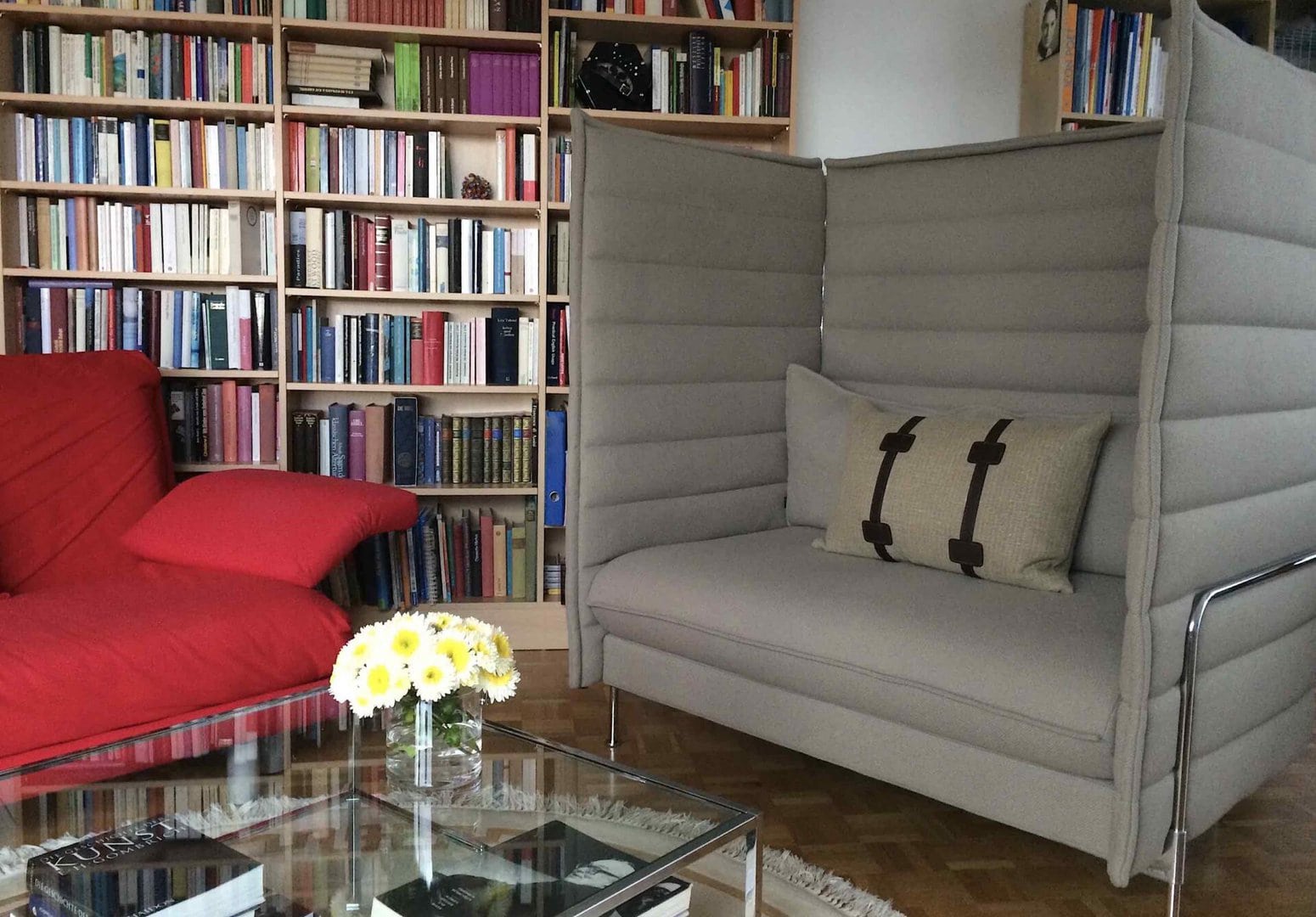
A flat of a young intellectual family in Zurich. Their working-from-home zone is set behind the sofa next to a large window, fully benefiting from the daylight. The high back of the Vitra Alcove Sofa provides separation between the working and living areas. Interior design by Nelly Zafirov Designs.
Other perceptual boundaries that can separate our workplace from the rest of the living area are: wall/walls painted in a different colour; different types of floor or carpet; and even music and scents can unobtrusively signal our zone.
Location
Intellectual concentration and focused work require tranquillity and an abundance of daylight. Therefore setting your office room or workplace zone in the quietest, well-lit corner of your home is fundamental.
Style & Complexity
The style we choose for our workplace at home mainly depends on our taste and the kind of work we perform. You can, for example, adopt your home’s existing style as a reference and then have your office accordingly designed, you can favour the style which serves you best or opt for a clever mix.

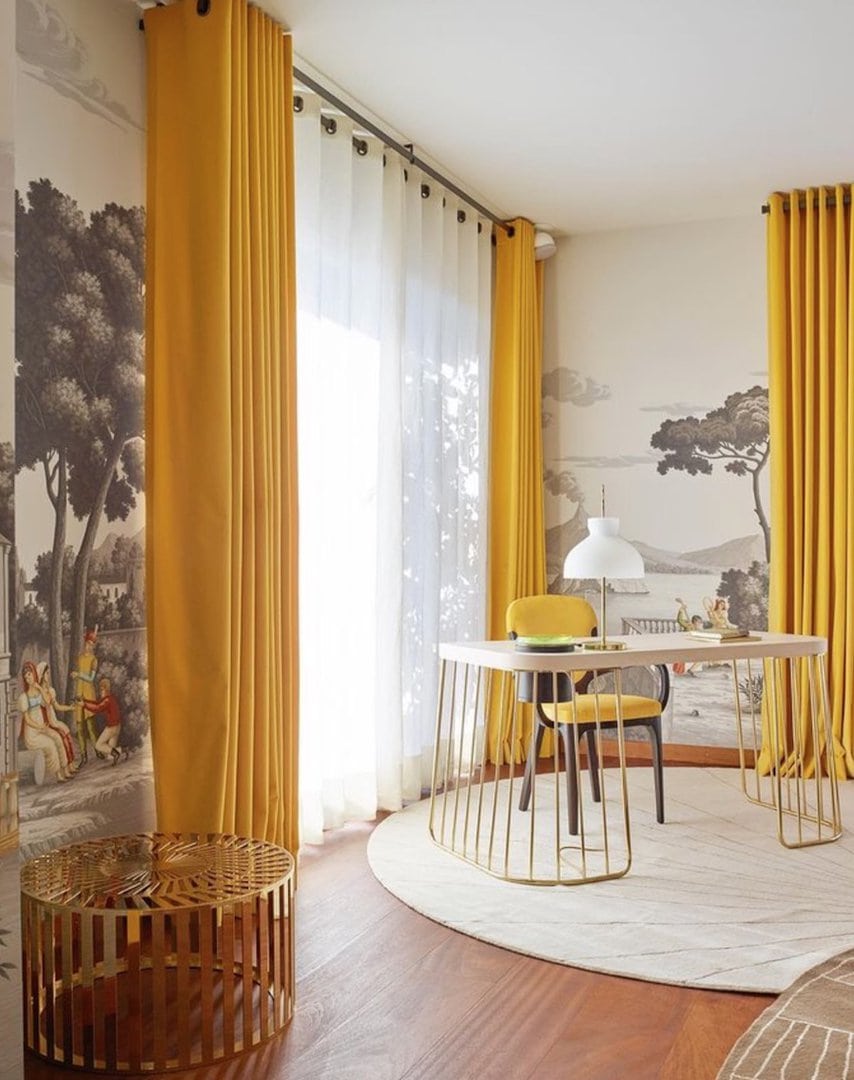
Contemporary home office design harmoniously integrated into a classic architectural shell. Accommodated close to the windows, both work facilities pictured benefit from the bright daylight. In the first image, we see a Zaha Hadid table, repurposed as a desk, perfectly fitting in this airy white room. Interior design by Francis Sultana. Photo credit: @francis_sultana. The golden desk feet and yellow chair upholstery elegantly match other similar elements in the living room featured in the second image. A carpet in a different colour than the main one is used as a territory marker differentiating the work corner from the rest of the room. Interior design by the Paris-based Studio Catoir. Photo credit: @studiocatoir.
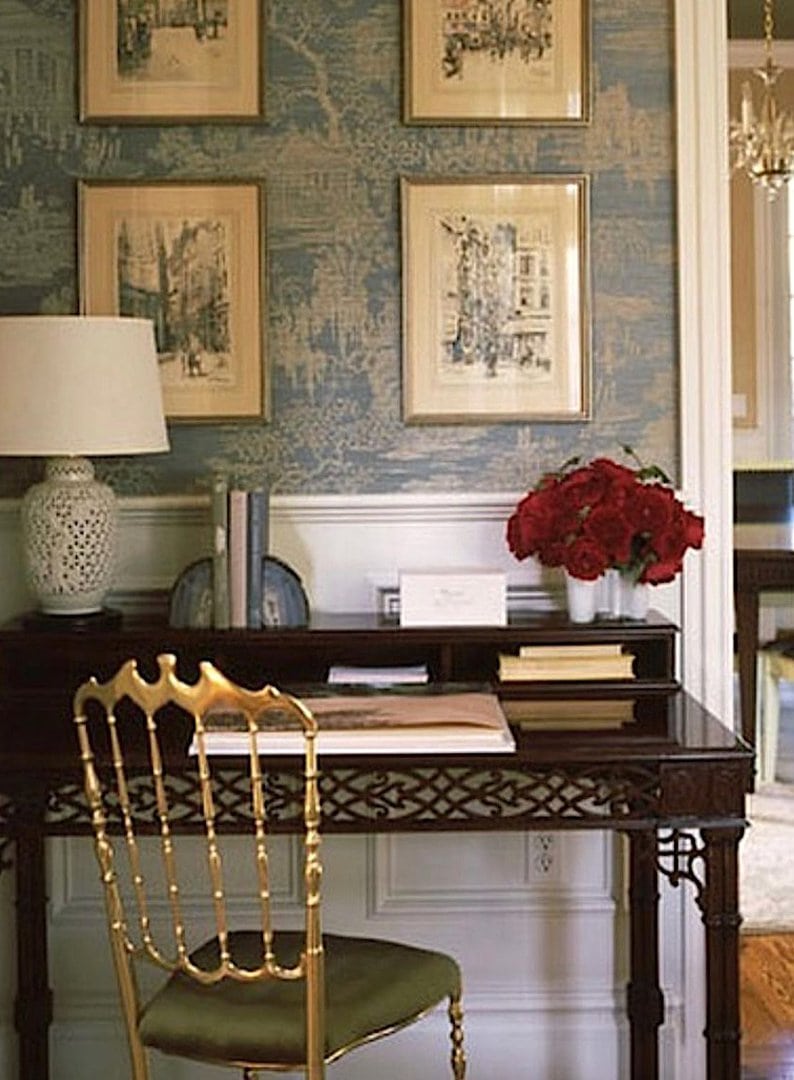
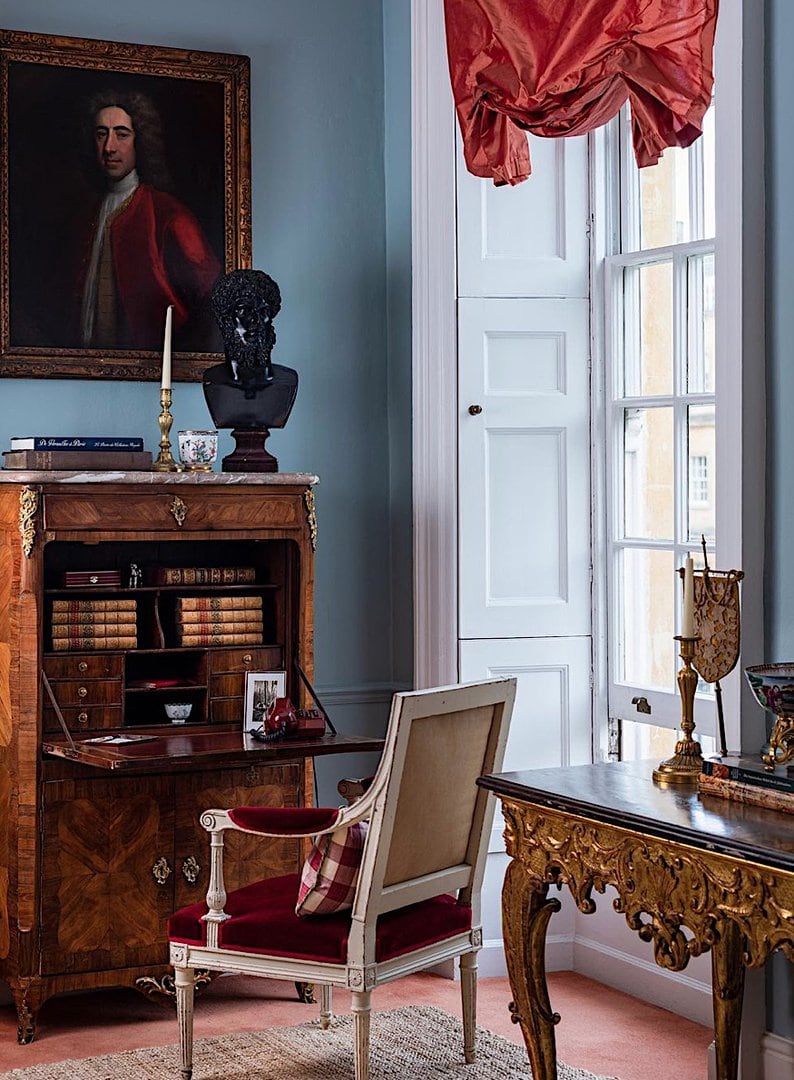
These two work nooks have entirely absorbed the traditional house feel and discreetly taken their place in rooms that serve other purposes. Pictured in the first image: A pretty office corner in a property near San Francisco. Interior design: Redmond Aldrich Design. Photo credit: @redmondaldrichdesign. Shown in the second image: With a window view overlooking King’s Circus in Bath, an 18th-century French secretaire offers a lovely place to complete some work from home. Interior design by Charles Benjamin. Photo credit: @charlesbenjaminstudio.
As to the complexity of an interior, people generally prefer moderately complex settings. Regarding a home office design, both ends of the amplitude, i.e., complexity and simplicity, have their logic. Namely, when doing something that requires a lot of mental concentration, we would appreciate less stimulating surroundings, for example, restrained designs and muted colours. When doing routine work that doesn’t require as much mental effort, we need more stimulating surroundings, for example, interesting furnishings, decorative objects, bold colours or expressive artworks.
When furnishings are precisely those which we need, and their arrangement supports our activities, we feel at ease and perceive the area as functional, more beautiful, ordered and spacious.
Regardless of whether this is an office of a rigorous accountant who only needs a computer or a creative designer who cannot work without various materials and tools, there are essential furnishings that equally belong to both a neat and sleek office and a richly layered studio.
Desk
When choosing a desc, ergonomics and functionality have priority. Its size depends on our needs and the size of the available space.
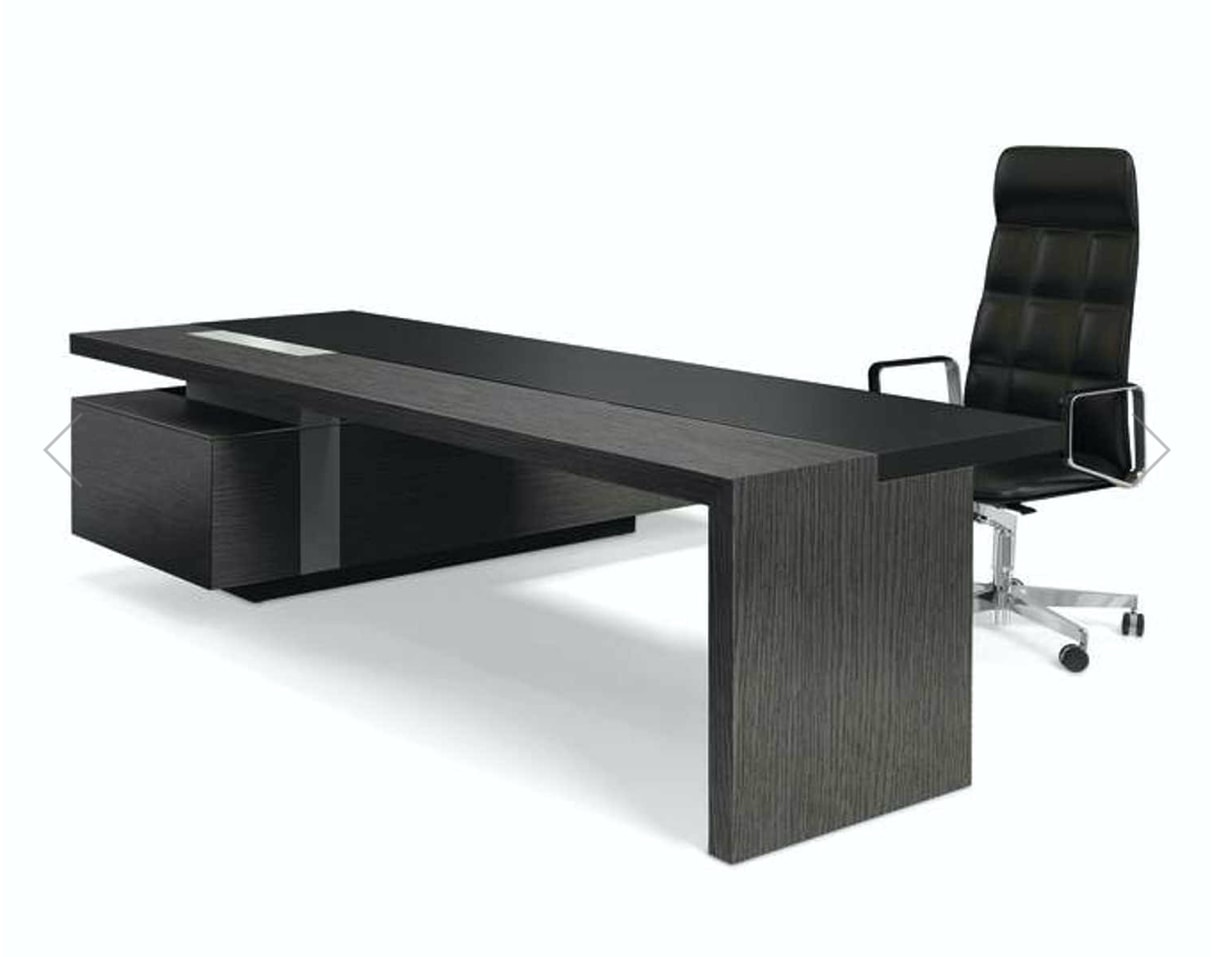
An ergonomic desk and chair are of great importance for any work-from-home setup. Pictured: CEOO Desk and Leadchair created by the Austrian design studio EOOS for the renowned German furniture manufacturer Walter Knoll. Photo credit: www.walterknoll.de.
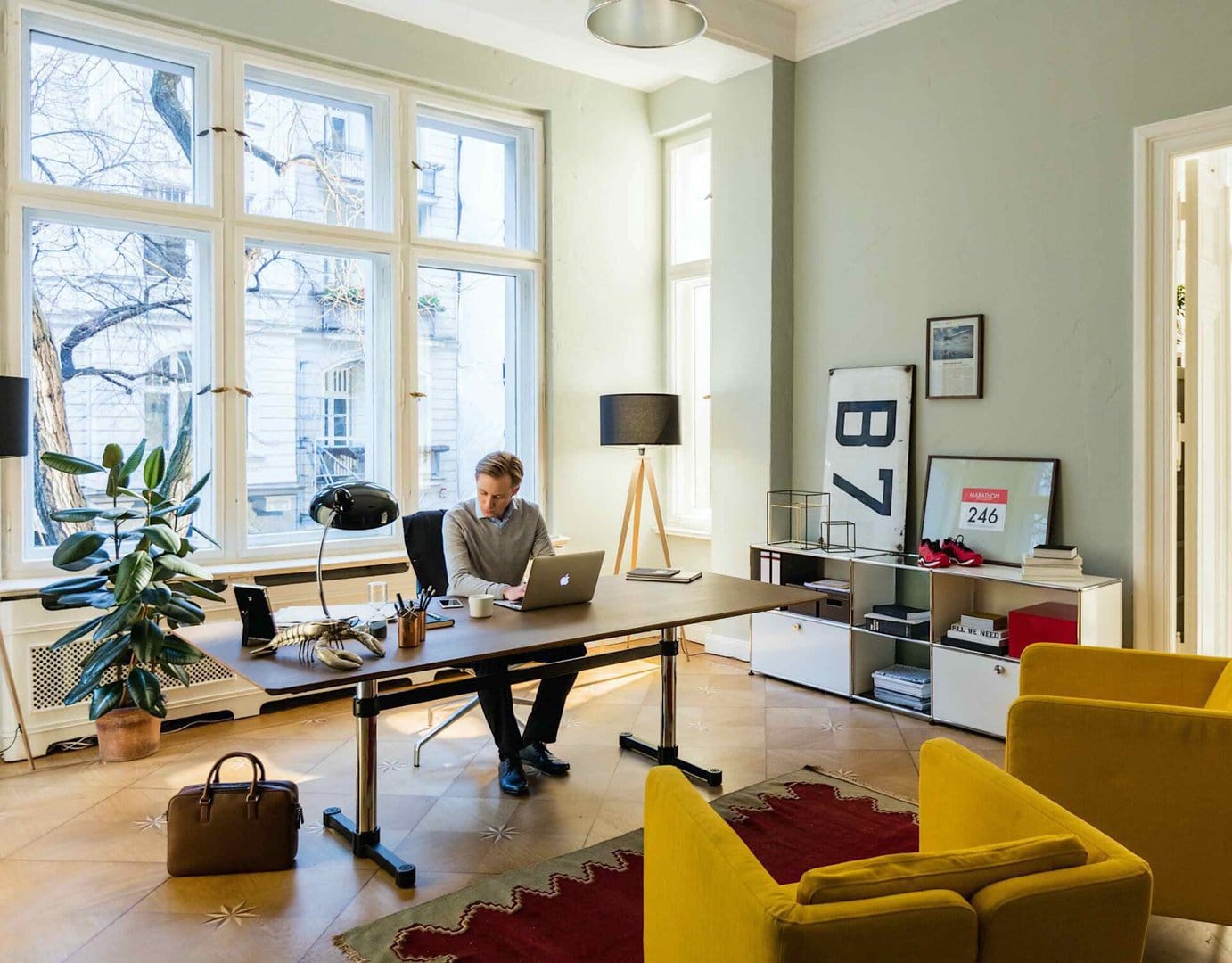
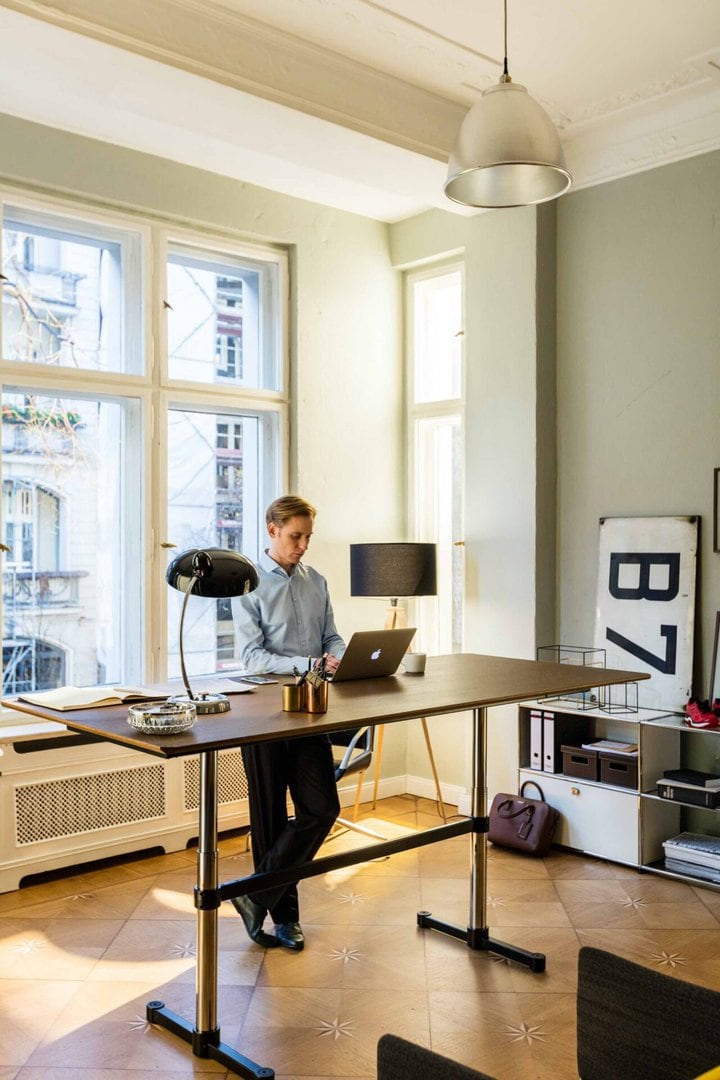
Height adjustable desks allow changing sitting and standing positions which is advisable as such switching has beneficial physical and mental ramifications. This naturally leads to better work performance. Shown in the pictures: height adjustable desk by the Swiss company USM, a pioneer and still leading company in individually adjustable furnishing. Photo credit: www.usm.com.
Desk Position
Have you noticed which place you preferably take when you can choose a seat in a restaurant or a waiting room?
When in a room, humans feel safe when they have a solid wall behind their backs and are also able to survey their surroundings, particularly easily monitoring doors and windows while being as far away from them as possible. Such behaviour called prospect and refuge is linked to our genetic memory going back to prehistoric times when our ancestors saw wall openings as dangerous places where an enemy could appear. In practice, this explanation means that our desk should be positioned so that we have a wall or solid furniture behind our back, face the door and windows, and can fully view our surroundings.

Spacious and comfortable home office designed by Marie Flanigan Interiors. A floor-to-ceiling bookcase and wall panelling bring the cosy spirit of a classic home library, while their straight geometric sections encourage clear analytic thinking. Sitting at the desk, one feels the safeguard of the background. On the other hand, the green wall and landscape painting give a nice perspective when facing the desk. Photo credit: @marieflaniganinteriors.
Office Chair
A comfortable ergonomic chair is crucial to maintaining a healthy posture while we work. Almost every part of a high-quality office chair is individually adjustable, supporting us to sit up straight and comfortably.
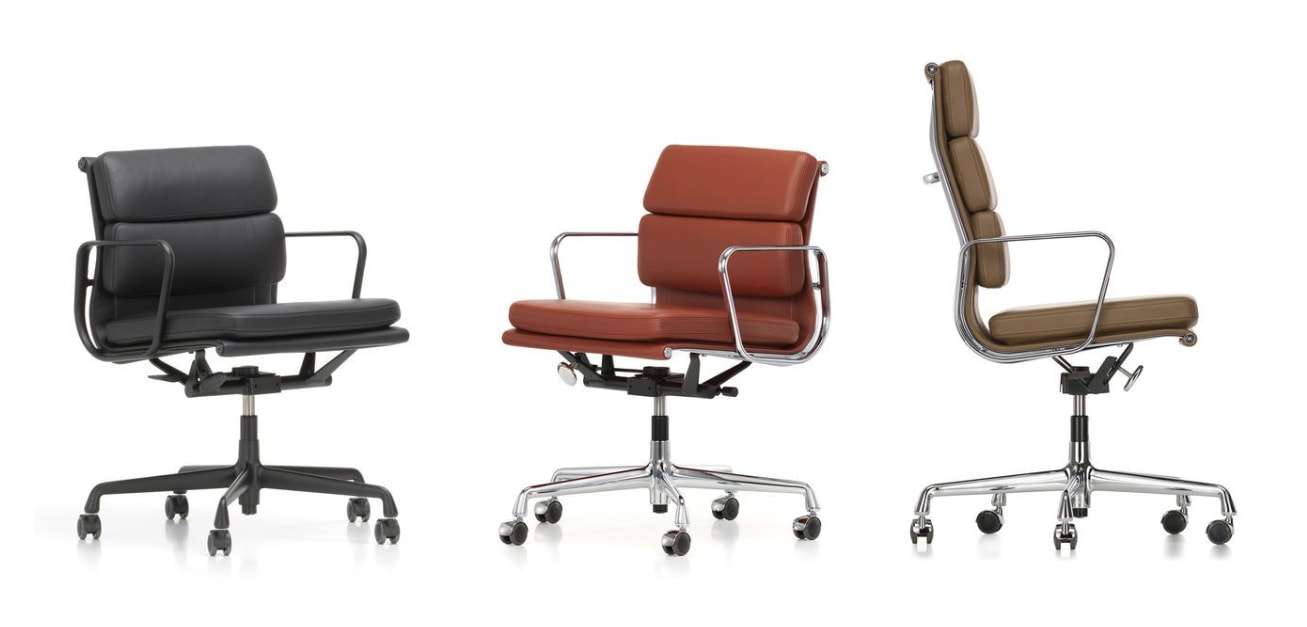
High comfort and functionality: Soft Pad Chair EA 217/219 by Charles & Ray Eames, 1969, manufactured by Vitra. Photo credit: www. vitra.com.
Sitting up straight has positive psychological implications. For example, people with a more upright posture enjoy higher self-esteem than those slouching while sitting. Especially in stressful situations, adopting an upright sitting posture can increase positive mood and motivation.
Storage
Storage possibilities such as a bookcase, sideboard and shelving units are of great help to order everything we need for our work within easy reach.
Image: A sideboard and a bookcase made by the Swiss brand USM, a pioneer in modular systems founded in 1885. The sideboard in the corridor to the home office works as a useful extension of the workplace. The correspondence with the bookcase of the same design in the office creates a flow that visually enlarges the space. Interior design by Nelly Zafirov Designs.

Relaxing Furniture at the Workplace
If you have enough space in your office, you can arrange a pleasant sitting area with armchairs and/or a sofa for relaxing, reading and conversations.
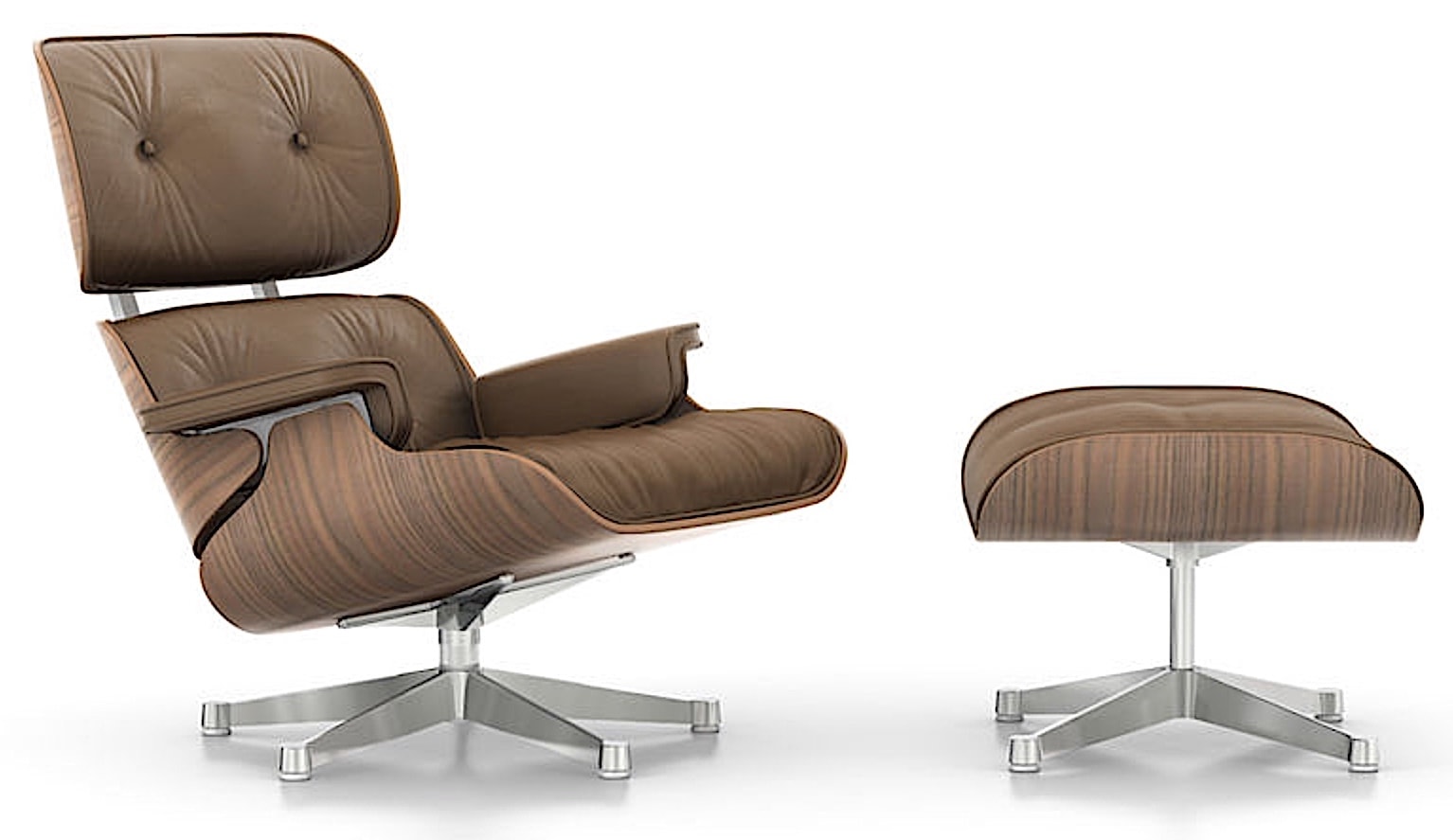

Introduced in 1956, the Lounge Chair by Rey & Charles Eames is still a favourite for both office and residential interiors. Besides its incomparable comfort, there is also a psychological reason for its long-lasting prominent status: its design ingeniously unites relaxation and powerfulness. People sitting on an Eames recliner naturally take an expansive posture that makes them feel powerful, which is what we need, especially when in work mode. Pictured (1st image): Lounge Chair and Ottoman in sand leather and walnut. Photo credit: www.vitra.com. A vintage Eames chair and ottoman reupholstered in Ralph Lauren woollen plaid, well suited for this mountain setting. Interior design by Jay Jeffers. Photo credit: @jayjeffers (2nd image).
1st image: Home office essentials by the renowned Italian furniture maker Poltrona Frau. Photo credit: @poltronafrauofficial.
